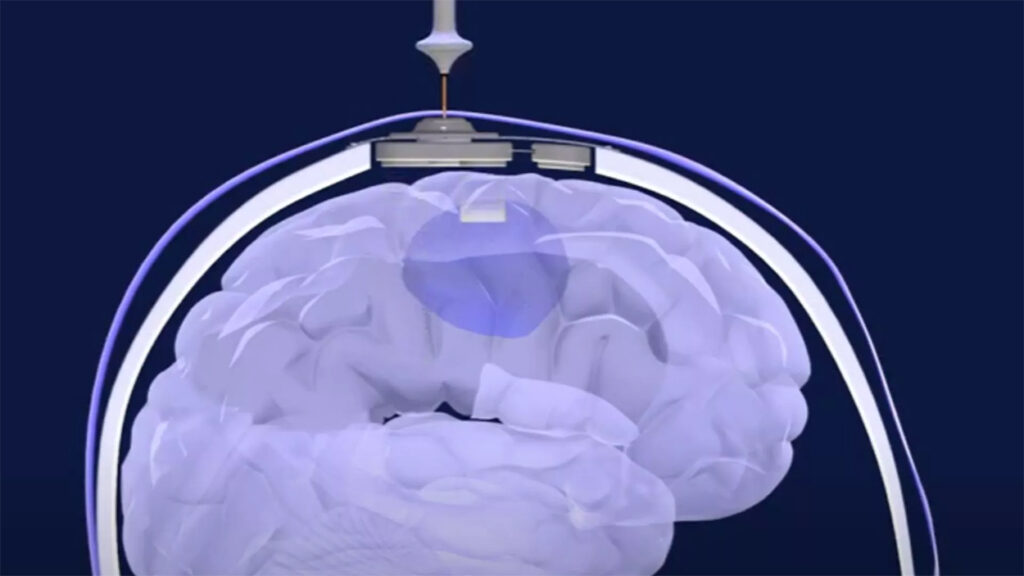Unique Implantable Ultrasound Device Temporarily Opens Blood-Brain Barrier to Deliver Cancer Drugs
Until today, there is no cure for cancer, although treatments are available to cure people with cancer. Chemotherapy is one of the cancer treatments many people undergo. While it is effective for most people, the process is not simple and can have several side effects. Also, it is costly.
Brain cancer
A Northwestern University research team focuses on glioblastoma, a common primary brain cancer affecting about 12,000 Americans annually. Glioblastomas are grade IV brain tumors, which means they are the most aggressive and have the most abnormal-looking cells.
Glioblastoma can grow in any part of the brain but commonly forms in the temporal and frontal lobes. The temporal lobe is at the bottom of the brain. This lobe processes input from the senses of touch, taste, sight, and hearing, processes language, and forms new memories. On the other hand, the frontal lobe is near the forehead and helps process memory, behavior, voluntary movement, and speech.
The research team realizes the importance of finding a way to help people with glioblastoma because a patient’s average rate of survival is 15 to 18 months after a diagnosis. The five-year survival rate is about 10 percent. Moreover, glioblastomas usually recur. But initial treatments can keep the tumor under control for months or years.
A breakthrough
The device the researchers developed can benefit glioblastoma patients greatly. This is the first time an implantable ultrasound device can temporarily open the blood-brain barrier to deliver the cancer drug.
The process is difficult to achieve because the blood-brain barrier is a tiny structure formed by closely packed tissue and blood vessels that keep drugs or harmful substances off the brain, which effectively limits the treatment of other diseases related to the brain.
Human clinical trials
Northwestern University researchers have already conducted human research trials of their device. Lead investigator of the device, Dr. Adam Sonabend, said that even if they focused on brain cancer, their research helps open new ways to study new drug-based treatments for other patients suffering from different brain diseases.
Brain cancer is a challenge to treat because of the blood-brain barrier, and it is difficult for potent chemotherapy to reach the specific tumor. Likewise, the barrier hinders the development of targeted and effective treatments for brain tumors.
The first human clinical trial, which is already in its second phase, tests the efficacy of the ultrasound method. They used a skull-implantable ultrasound device that temporarily opened the blood-brain barrier. The temporary opening of the barrier allowed chemotherapy drug delivery to the brain intravenously.
In their official statement, the researchers said it takes four minutes to open the blood-brain barrier. The patient was awake during the procedure and allowed to go home a few hours after the treatment. It took several months to conduct their clinical trial, and they repeated the treatment every few weeks. As they can deliver the drug directly to the tumor, the concentration increases by four to six times.
Quick closure of the barrier
The team’s new study showed that the blood-brain barrier only opens briefly. Based on their research, the restoration of the blood-brain barrier starts within the first 30 to 60 minutes after brain sonication (moving particles through sound waves). Carthera, a company that develops innovative ultrasound-based medical devices for treating various brain disorders, developed the device with nine ultrasound emitters, giving the research team a bigger opening to direct the treatment drug to a larger part of the tumor.
Participants in the clinical trial are patients with recurrent glioblastoma. The study’s goal is to determine if this treatment method will improve the patient’s survival. Because of the aggressiveness of glioblastoma, a new tumor can grow in the same place as the first tumor after surgical removal. After the surgery, the patient can only receive a weak chemotherapy drug that can bypass the barricade, an action that more potent drugs cannot do.
The novel method
The patients receive an intravenous injection of a solution consisting of microscopic bubbles filling the blood vessels. In the targeted brain location, they use ultrasound waves to shake the microbubbles, which open the dense walls of blood vessels. For the study, they removed the regrown tumors from all the participants, and the new ultrasound device was implanted in their skulls near the cavity where the tumor was removed. The patients received two to six rounds of treatment; each delivered every three weeks.
For each session, the team injected each participant with microbubbles for 30 seconds and received an ultrasound wave pulse for about five minutes simultaneously. The waves reach the target area where the tumor cavity is located. The depth of penetration of ultrasound waves is about eight centimeters. Afterward, doctors introduce a 30-minute intravenous infusion of a potent chemotherapy drug that cannot access the brain previously. The researchers found that the blood-brain barrier naturally closes about one hour after delivery of the drug.
The team demonstrated that using the ultrasound device effectively opens the blood-brain barrier and safely delivers a more potent chemotherapy drug. However, they will need more time and more participants to determine the right drug combinations, dosage, and delivery schedule to make the treatment method more effective.

